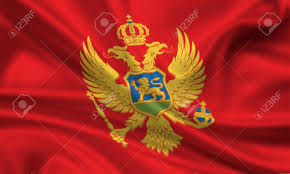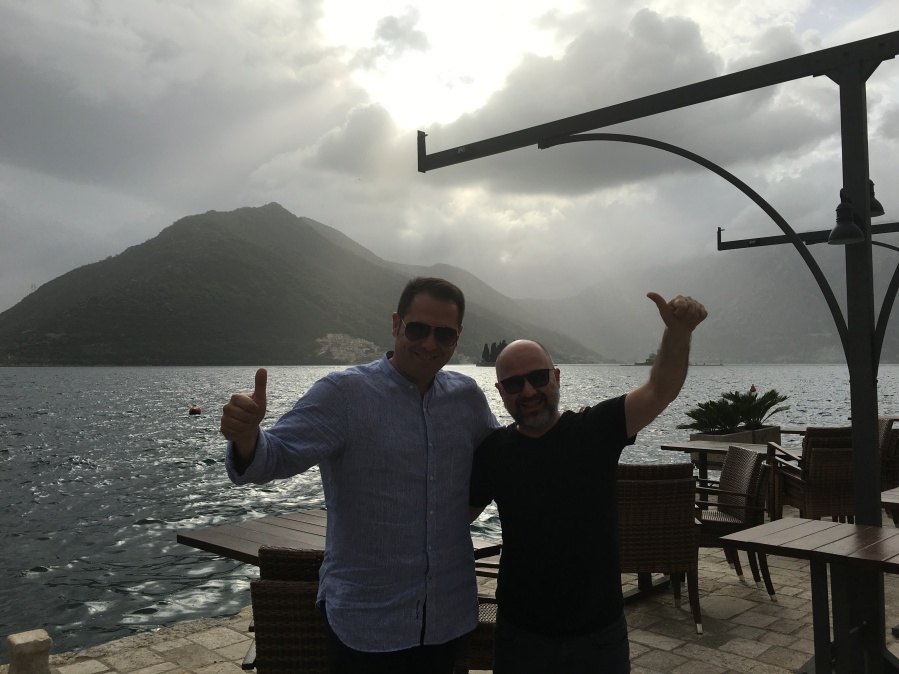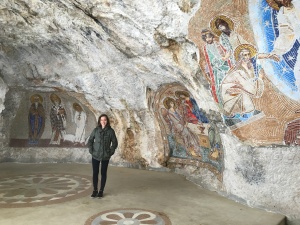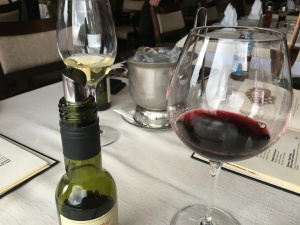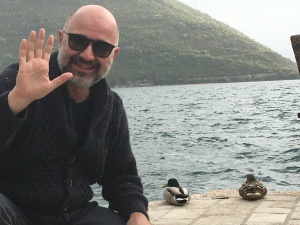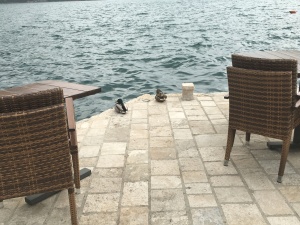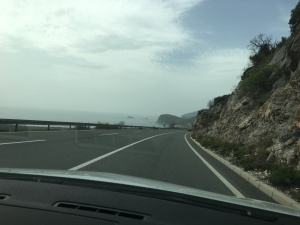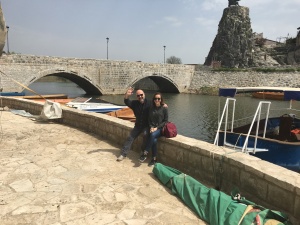 I had promised my daughter that I would take her to the beautiful city of Thessaloniki, Greece for her spring break holiday this year. So I made all the flight and accommodation arrangements for the 7th and 8th of April. It was going to be a wonderful 2-day trip for us. Our kind friend Prof Panagiotis Ketikidis with his great Greek hospitality, prepared an excellent programme that included many surprises for us.
I had promised my daughter that I would take her to the beautiful city of Thessaloniki, Greece for her spring break holiday this year. So I made all the flight and accommodation arrangements for the 7th and 8th of April. It was going to be a wonderful 2-day trip for us. Our kind friend Prof Panagiotis Ketikidis with his great Greek hospitality, prepared an excellent programme that included many surprises for us.
But the real surprise came with an SMS to my mobile phone on the evening of 7 April, the evening before our scheduled departure to Thessaloniki. It was a very disappointing message from Turkish Airlines! All flights to all airports in Greece were cancelled due to a strike by aviation staff throughout Greece! That was really bad news for me because it would be nearly impossible to replace this wonderful trip.
Panos was also very sorry, but what could he do? Nothing, of course!
My daughter and I were sad, but what could we do? Something, of courseJ:
I called Ivan Joveric, my friend from Montenegro, to learn if he was going to be in the country on the 8th and 9th of April. He is the President of the Montenegro Trade Association for Business Angels. I knew he owned a nice hotel in Montenegro and also a travel agency.
Because I had never been to Montenegro, it would be a good discovery not just for my daughter, but for me as well. I have visited every country in the Balkans except Montenegro. I don’t know why, but that was the case.
After hearing from Ivan that he would indeed be in Montenegro and that he would be very pleased to greet us in Montenegro, I called Turkish Airlines to change our tickets to Podgorica, the capital of Montenegro. Istanbul – Thessaloniki is a 60-minute trip, while Istanbul – Podgorica is 90 minutes, and the departure time was about the same as for Thessaloniki. So we would end up spending a mere 30 extra minutes in the air because of the strike in Greece. That was all!
After a comfortable 90-minute flight, we were in Podgorica!
The first thing I heard from my daughter as soon as she stepped out the plane was,
‘What wonderful weather this is’!
The economy of Montenegro is mostly service-based and is in late transition to a market economy. According to the International Monetary Fund, the nominal GDP of Montenegro was $4.114 billion in 2009. The GDP PPP for 2009 was $6.590 billion, or $10,527 per capita. According to Eurostat data, the Montenegrin GDP per capita stood at 41% of the EU average in 2010. The Central Bank of Montenegro is not part of the euro system but the country is “euroized”, using the euro unilaterally as its currency.
GDP grew at 10.7% in 2007 and 7.5% in 2008. The country entered a recession in 2008 as a part of the global recession, with GDP contracting by 4%. However, Montenegro remained a target for foreign investment, the only country in the Balkans to increase its amount of direct foreign investment. The country is expected to exit the recession in mid-2010, with GDP growth predicted at around 0.5%. However, the significant dependence of the Montenegrin economy on foreign direct investment leaves it susceptible to external shocks and a high export/import trade deficit.
In 2007, the service sector made up for 72.4% of GDP, with industry and agriculture making up the rest at 17.6% and 10%, respectively. There are 50,000 farming households in Montenegro that rely on agriculture to fill the family budget.
Aluminium, steel production and agricultural processing make up for most of the industrial output. Tourism is an important contributor to the Montenegrin economy. Approximately one million tourists visited Montenegro in 2007, resulting in €480 million of tourism revenue. Tourism is considered the backbone of future economic growth, and government expenditures on infrastructure improvements are largely targeted towards that goal.
Podgorica is not only the administrative centre of Montenegro but also its main economic engine. Most of Montenegro’s industrial, financial, and commercial base is in Podgorica.
Before World War I, most of Podgorica’s economy was in trade and small-scale manufacture – an economic model established during the long rule of the Ottoman Empire. After World War II, Podgorica became Montenegro’s capital and a focus of the rapid urbanization and industrialization of the SFRY era. Industries such as aluminium and tobacco processing, textiles, engineering, vehicle production, and industrialized wine production were established in and around the city. In 1981, Podgorica’s GDP per capita was 87% of the Yugoslav average.
In the early 1990s, the dissolution of Yugoslavia, Yugoslav wars, and the UN-imposed sanctions left Podgorica’s industries without traditional markets, suppliers, and available funds.
As Montenegro began its push for independence from Serbia in the late 1990s, Podgorica greatly benefited from increased concentration of government and service sector. In addition to almost the entire country’s government, Podgorica is home to the Montenegro Stock Exchange and other major Montenegrin financial institutions, telecommunications carriers, media outlets, Montenegrin flag carrier airline, and other significant institutions and companies. Istanbul Stock Exchange owns 25% of the Montenegro Stock Exchange.
This time I will tell you about my trip not day by day, but by my reaction to our experiences.
- I was a little bit upset with myself. How had I put off visiting such a beautiful country for so long? This question was in my mind every second of the trip. I am posting many photographs below, so I will be quiet and let the photos speak for themselves.
- I think Montenegro may a branding problem. It means ‘Black Mountain’ and there is nobody (not just me) who will enjoy visiting a destination with a negative stimulus. Unfortunately, I am sure that this ‘Black’ word causes people to put Montenegro at the bottom of their list of places to visit. If the name translated as ‘White Mountain’, I think I might have gone there 10 years agoJ
- After you see the country, you understand that it has absolutely no relationship to the word ‘black’. Instead, there is a strong relationship with ‘green’, so you start to question what you have missed up to now. It is really a very nice, green country with an awesome coastline.
- It takes just 60 minutes from the airport to any hotel on the coast, where you will enjoy the very clean Adriatic Sea and its wonderful sandy beaches—sandy beaches with superb hotels that are only a few kilometres from Albania and Croatia.
Roads: Perfect!
Coastline: Perfect!
Hospitality: Perfect!
People: Perfect!
Prices: Perfect!
- You will not believe your eyes when you see the coast of Montenegro. You will understand why Madonna bought a house here, and why Marlon Brando came so frequently for his holidays.
- We had a wonderful lunch, including delicious meat, fish, and chicken, along with wonderful wines, desserts and champagne — all on the beach of a five-star restaurant. The bill for everything: only 70 EUR!
- I think one ought to come live in Montenegro if you don’t have to be in your own cityJ
- Enjoy breakfast on the shore of the biggest lake of the Balkans!
- Enjoy the old capital of Montenegro, where you can read the history of each building on its facade — buildings that are over 100 years old and generally not higher than 3 storeys.
- Wonderful Adriatic weather.
- A very safe country—you can walk on the streets in the city centre at night.
- Enjoy dining on the Bay of Kotor, with a view of what is often called the southernmost fjord of Europe.
- Admire the historical monastery carved into a cliff of the highest mountain in Montenegro. A similar monastery (Sumela Monastery) is located in Trabzon, a city in northern Turkey.
- The beautiful Bay of Kotor – or Boka Kotorska – is often called Europe’s most southernmost fjord. It certainly looks like one, with towering peaks surrounding a rocky coastline dotted with pretty waterside towns. Add in a few cruise ships in the bright blue waters and you could almost be in Norway. But both the water and the climate here are much more Mediterranean than Scandinavian. Please visit the following web site for more about this wonderful hidden heaven of the world:
http://www.ontheluce.com/2013/06/21/the-bay-of-kotor-where-the-fjords-meet-the-mediterranean/
Why Montenegro should be in your travel list?
Answer is here:
http://www.ontheluce.com/2013/06/18/welcome-to-montenegro/
My daughter and I did not enjoy ‘Kara Dag’ / ‘Black Mountain’ but we definitely fell head over heels in love with Montenegro ….
Thank you, dear Ivan, for your generous hospitality!
Buy your flight ticket from Turkish Airlines, fly via Istanbul to Montenegro, and send an email to Ivan Jovetic and ask him to arrange the same trip he organized for Baybars and his daughterJ.
Here is Ivan Jovetic’s e-mail: ivan.jovetic@gmail.com

